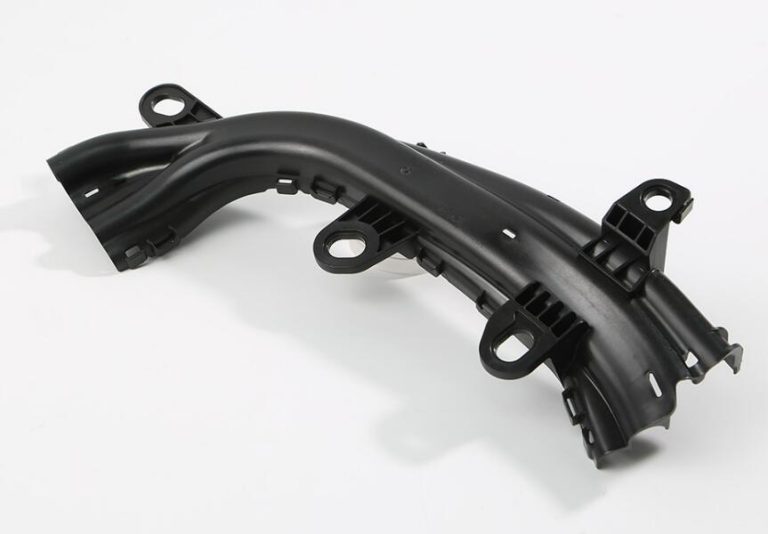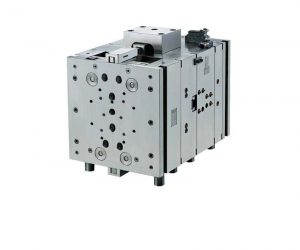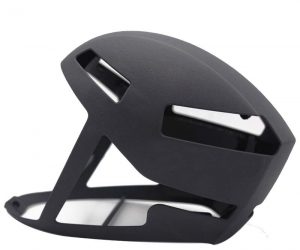Plastic mold is a combination mold used for compression molding, extrusion molding, injection molding, blow molding and low foam molding. Through the coordinated changes of the convex and concave and auxiliary forming systems, a range of plastic parts with different shapes and sizes can be processed. In order to meet the needs of molded parts, you need to pay attention to some things when selecting plastic molds and put forward corresponding requirements.
First of all, when choosing a plastic mold, you need to consider its suitability and reliability. Different types of plastic materials have different characteristics and process requirements, so it is necessary to choose a mold suitable for the required material. In addition, the reliability of the mold is also crucial. It should have stable performance and long life to ensure stability and consistency during the production process.
Secondly, the design of plastic molds should consider the accuracy and surface quality requirements of the molded parts. For some high-precision and high-quality products, the design of the mold should be able to ensure the dimensional accuracy and surface finish of the molded parts. This may require special mold design and manufacturing techniques such as precision machining and polishing.
Third, the selection of plastic molds should also consider production efficiency and cost-effectiveness. In mass production, the production efficiency of molds directly affects production costs and delivery cycles. Therefore, it is crucial to choose molds with high production efficiency and low energy consumption. In addition, the cost of the mold is also an important consideration, and it is necessary to reduce the cost of the mold as much as possible while meeting the performance requirements.
Finally, the choice of plastic molds should also consider the convenience of subsequent maintenance and upkeep. Molds require regular maintenance and upkeep during use to ensure their normal operation and extend their service life. Therefore, it is necessary to choose molds that are easy to disassemble, clean and maintain to reduce downtime and repair costs.
To sum up, when choosing a plastic mold, you need to comprehensively consider factors such as its applicability, reliability, design accuracy, production efficiency, cost-effectiveness, and subsequent maintenance. Only by meeting these requirements can high-quality, high-efficiency plastic molded parts be obtained. The following six requirements should be met when selecting more appropriate plastic molds.
- High corrosion resistance Many resins and additives have corrosion effects on the surface of the mold cavity. This corrosion causes the metal on the surface of the mold cavity to dissolve, peel off, deteriorate the surface condition, and deteriorate the quality of the plastic parts. Therefore, it is better to use corrosion-resistant steel, or chrome plating, cymbal nickel treatment on the cavity surface.
- Good abrasion resistance The glossiness and precision of the surface of plastic plastic parts are directly related to the abrasion resistance of the surface of the plastic mold cavity. Especially when glass fiber, inorganic filler and some pigments are added to some plastics, they flow together with the plastic melt at high speed in the flow channel and cavity, causing great friction on the cavity surface. If the materials are not abrasion resistant, they will soon wear, causing damage to the quality of the plastic parts.
- Good dimensional stability When plastic molding, the temperature of the plastic mold cavity should be above 300 ℃. For this purpose, it is better to select tool steel (heat treated steel) with proper tempering treatment. Otherwise, the material microstructure will be changed, resulting in changes in the size of the plastic mold.
- The die parts that are easy to process are mostly made of metal materials, and some structural shapes are very complex. In order to shorten the production cycle and improve efficiency, the die materials are required to be easy to process into the shape and precision required by the drawings.
- Plastic plastic parts with good polishing performance usually require good luster and surface state, so the roughness of the cavity surface is required to be very small. In this way, the cavity surface must be processed, such as polishing, grinding, etc. Therefore, the selected steel should not contain rough impurities and pores.
- In order to improve the hardness and wear resistance, the plastic mold is generally subject to heat treatment, but this treatment should make its size change very small. Therefore, it is better to use pre hardened steel that can be machined.
The importance of selecting suitable plastic molds
In modern manufacturing, the widespread use of plastic products makes the selection of plastic molds particularly important. High quality plastic molds not only directly affect the quality of the final product, but also relate to production efficiency and cost control. However, there are many types of molds available in the market, and it is often confusing to find the mold that best meets specific needs among the numerous options. This article will explore six key factors to consider when choosing plastic molds to help manufacturers make informed decisions.
Firstly, the type of plastic is the primary factor that must be considered when choosing a mold. Different types of plastics have different physical and chemical properties, such as melting point, shrinkage rate, and flowability. These characteristics directly affect the design and manufacturing requirements of the mold. Choosing a mold that can effectively handle specific types of plastics is the foundation for ensuring the expected quality and consistency of the final product.
Secondly, production volume is also an important factor to consider. For the demand of large-scale production, molds must have high wear resistance and stability. High quality molds not only have a longer service life, but also maintain consistent product quality over a long production process, thereby saving costs for the enterprise in the long run.
Third, the delivery time of molds is also crucial. Delivery time refers to the time required from mold design to completion of manufacturing. If a company faces an urgent production deadline, it needs to choose a manufacturer that can deliver quickly without sacrificing quality. Timely delivery can help businesses seize market opportunities and avoid losses caused by delays.
Fourthly, cost is an important factor that cannot be ignored when selecting molds. The cost of molds is influenced by various factors, including the complexity of the design, the type of plastic used, and the expected production volume. When choosing molds, manufacturers need to find a reasonable balance between cost and quality to ensure that the investment is worth it.
Fifth, the quality of the mold is directly related to the quality of the final product. High quality molds can ensure consistent product production, reduce defect rates, and improve durability, thereby reducing the need for frequent maintenance or replacement. Choosing high-quality molds can not only enhance product image, but also increase customer satisfaction and loyalty.
Finally, customer support is also an important factor that cannot be ignored. A trustworthy mold manufacturer should provide excellent customer service and promptly answer any questions or concerns encountered by customers throughout the entire procurement and production process. Good customer support can provide businesses with greater peace of mind, ensuring that problems encountered during the production process can be quickly resolved.
In summary, selecting the appropriate plastic mold is a complex and important process that requires comprehensive consideration of multiple factors such as plastic type, production volume, delivery time, cost, quality, and customer support. By comprehensively analyzing and evaluating these key factors, manufacturers can choose a mold that is both efficient and economical, thereby improving product quality and market competitiveness.


